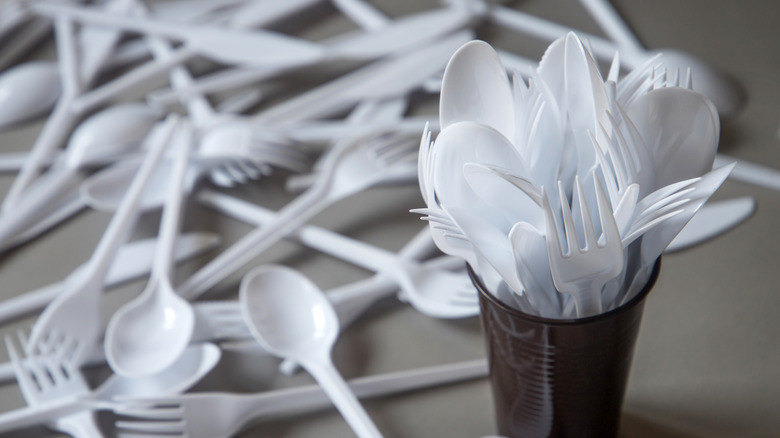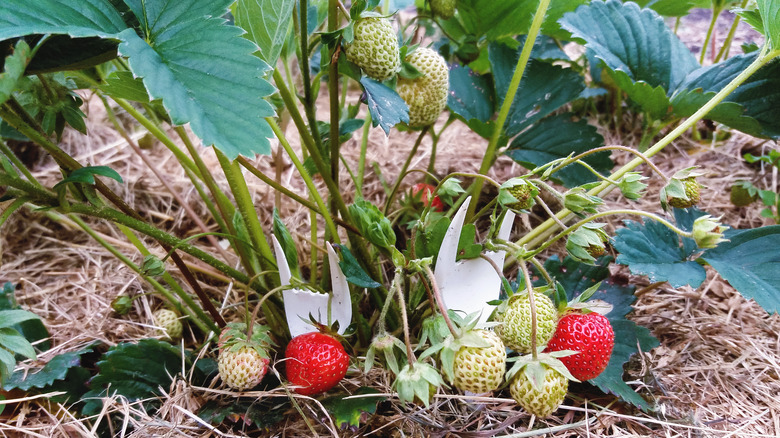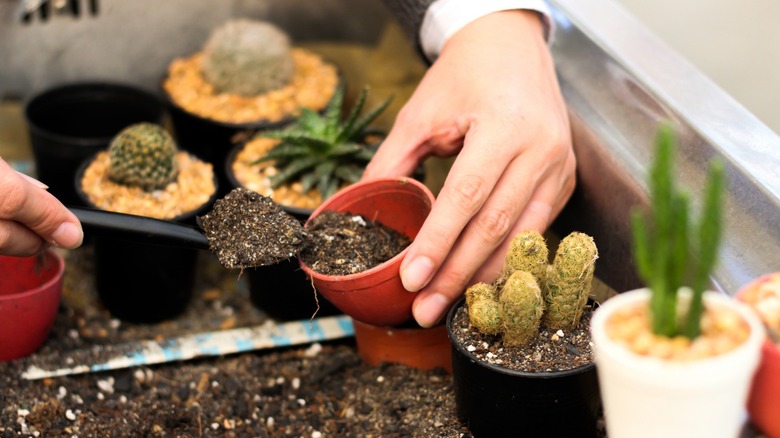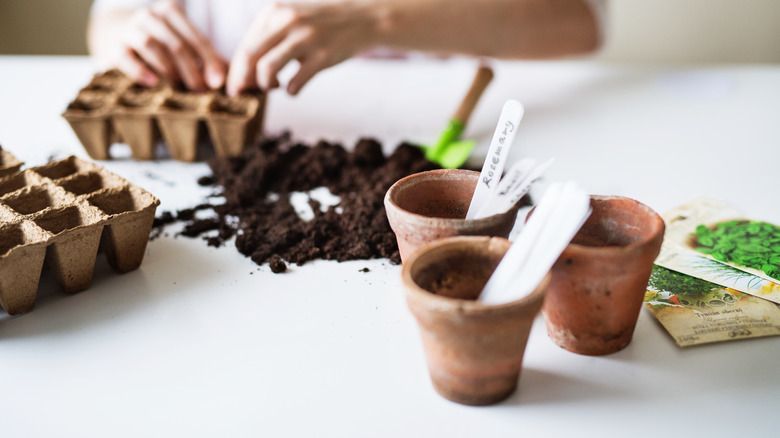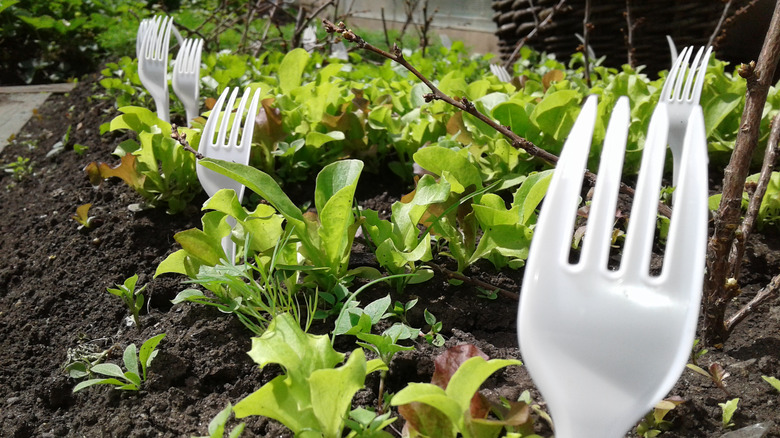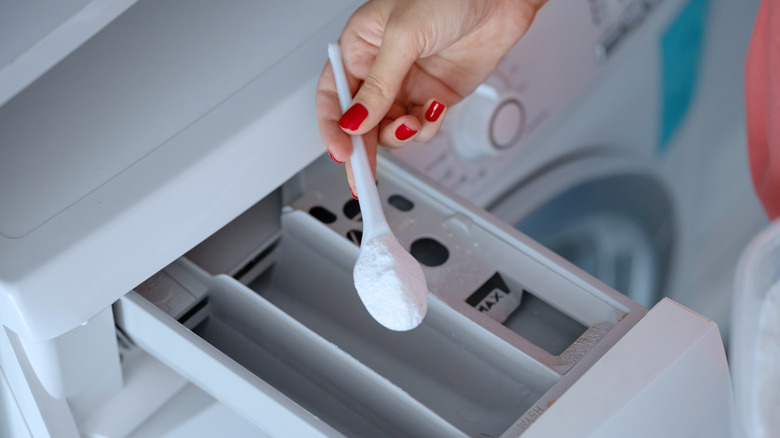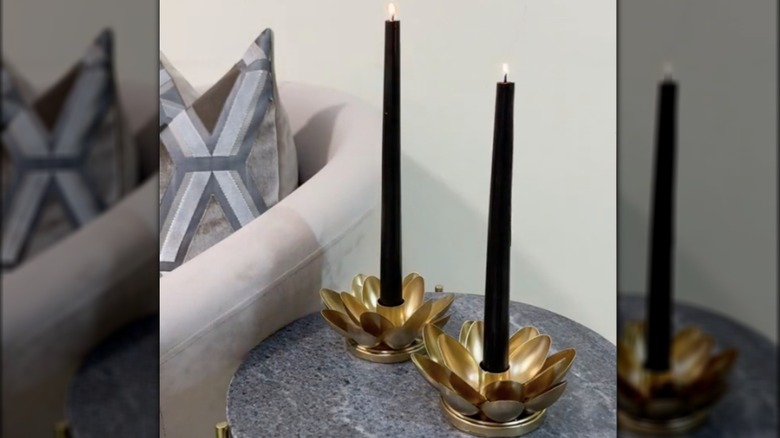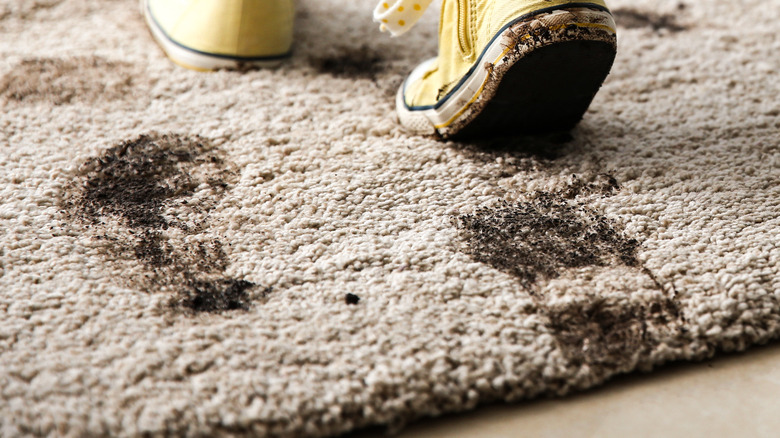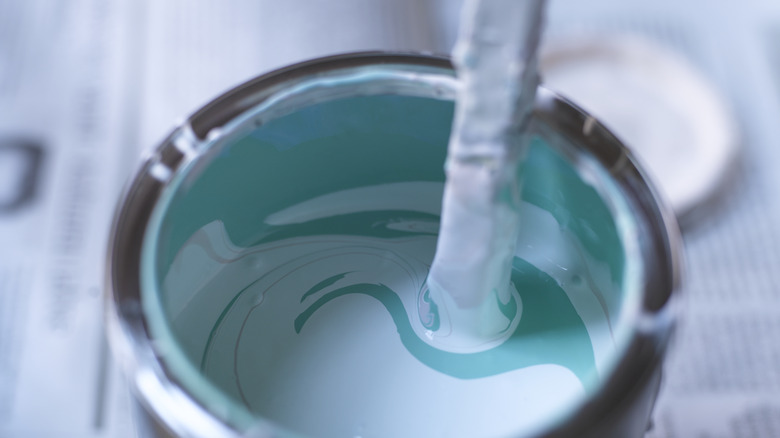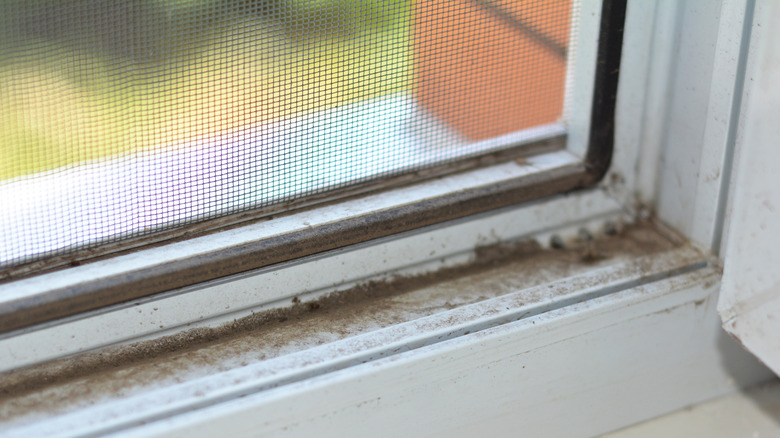Clever Ways To Repurpose Plastic Silverware Around The House
When you open a specific kitchen drawer, are you met with hundreds of pieces of plastic silverware? Well okay, maybe not that many, but still quite a lot. These disposable utensils can pile up from takeout orders and parties. Suddenly, you may have a large collection that you're not sure what to do with, and you might be tempted to just throw them all into the trash. However, according to Habits of Waste, 40 billion plastic forks, spoons, and knives are discarded in the United States annually, and these utensils contribute to pollution that contaminates the water and environment. Instead of adding to the waste, discover how to turn these single-use plastic pieces into multi-use ones by repurposing them around the home.
Perhaps great in a pinch or on-the-go, plastic pieces are often much flimsier than actual flatware, making them the less-ideal choice when eating at home. However, they are also waterproof, pretty durable for certain tasks, and easy to cut or break, making them quite versatile. In fact, they can become handy in many rooms of the home and also in your backyard for tasks like cleaning, decorating, renovating, and gardening. These tricks are creative ways to repurpose old or unwanted items that may keep you from having to buy new products, thereby saving you money.
Garden stakes
Plastic knives and forks can lend a helping hand in your garden. The cutlery becomes a stake for your seedlings or weak plants that need extra support. Prop up a knife in the soil, being careful not to poke any roots, and lean the greenery onto the crutch. You can also superglue multiple knives together to create a long stake that's perfect for vines to climb up. Forks work too, but it's best to remove the middle prongs so the plants can grow through the middle of the fork.
Mini garden tools
Plastic utensils are mini garden tools in disguise. The spoon is a shovel, the knife is an aerator, and the fork is a rake. Use the spoon to scoop soil, the fork to plant seeds, and the knife to poke holes in the soil to loosen it so your plants get more air and water. While they wouldn't be the most efficient equipment for acres of land, they're a suitable size for your windowsill garden box, growing seedlings, and beautiful houseplants.
Plant markers
It's important to keep track of the plants in your garden so that every species gets the right care needs, and plastic cutlery can help with that. Write the plant's name on the utensil's handle in permanent marker and place it in the crop's pot or near it in the garden to create a cute label. Plus, with rubbing alcohol, you can remove the marker ink and keep reusing the same plasticware for years.
Pest deterrent
Another way you can use plastic forks in your garden is as a pest deterrent. Simply plant the utensil prongs facing upwards between your plants to ward off any animals who may want to use your garden as a personal bathroom or a buffet. The sharp stakes will create a barrier that critters won't cross, as they won't want to get pricked. This hack works best for creatures like raccoons, caterpillars, beetles, squirrels, and birds.
Container scoops
Plastic spoons make great scoops that you can leave in a container. They can be placed in various containers including a large bag of pet food or birdseed, a box of powdered laundry detergent, a jar of fertilizer, or any bins that hold your kitchen pantry staples like sugar. Place the cutlery inside the container or tape it to the bag, jar, or box so it doesn't get lost. Each item will have a personal scoop that you can reuse over and over again.
Candle holder
If you're feeling crafty, turn those single-use spoons into stunning decor. The plasticware can become a gorgeous candle stand, but you'll also need a jar lid, super glue, spray paint, scissors, and a bottle cap. First, cut the stems from the spoons, then glue the bottle cap to the center of the top of the jar lid. Next, attach the spoon petals around the lid's perimeter and make a second row around the bottle cap. Lastly, spray paint your creation any color you desire and add your candle. Just like that, your old spoons went from trash to treasure.
Putty knife for cleaning and renovating
While you may not have known that you needed a putty knife for cleaning until something spilled on your rug, you don't have to go out a buy one — just use a plastic knife instead. It scrapes gunk from carpet, hardwood, countertops, furniture, baseboards, and more without damaging the surface. You can also use these knives to spread spackling compound when filling wall holes and when completing other renovation projects. A set of three putty knives can cost almost $10, but with the cutlery pilling up in your kitchen drawers, you have a steady supply for free.
Paint stirrer
Your plastic forks, spoons, and knifes can also work for stirring paint. However, these utensils are best for smaller cans, because with larger containers, you run the risk of them drowning in the gallon bucket of paint. Additionally, once you've finished the project, dip the plastic inside the can to mark how much paint remains, then leave the utensil taped to the can as a color and level indicator. You could even write the name of the color on the cutlery as well before attaching it to the can.
Crevice cleaner
Dirt and grime can easily settle into small cracks in your home. Luckily, the plastic utensils' thin and malleable composition makes them great for tackling hard-to-reach areas. Clean around faucets, baseboards, windowsills, and more. Use a knife or a fork to dig out sunken dirt before covering the utensil in a damp cloth to collect the loosened debris from the tight area.
